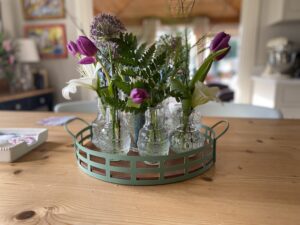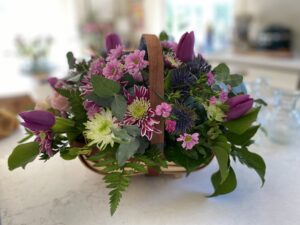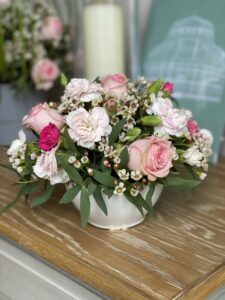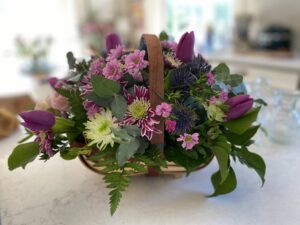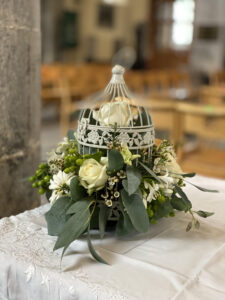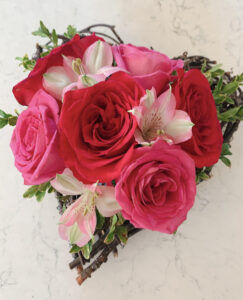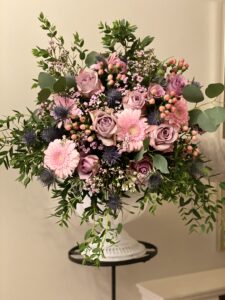For many, decorating their beloved church with flowers is a demonstration of their faith and their creativity with blooms and foliage serving to lift the spirits and bring joy. As we search for ways in which our flower arranging in church can be more sustainable and better for the environment, we’re hoping to bring you ideas and information over the coming months on how we can all achieve a better way of arranging our flowers.
The two biggest concerns appear to be a. the carbon footprint which comes from importing flowers and b. the use of floral foam which is made of toxic microplastics. A typical block of floral foam contains the same amount of plastic as 10 plastic carrier bags, it doesn’t compost, can last for a few hundred years and unfortunately the micro-plastics end up in the water supply – which is toxic and hugely damaging to marine life.
To address these concerns, we’d like to encourage church flower arrangers to consider using only seasonal flowers from their gardens or to go foraging and to look at the different mechanics that can be used to create floral structures, instead of using floral foam.
Providing a water source for cut flowers and foliage is of course, essential. We can easily place our stems in vases and many parishes have plenty of these, but if you’re interested in creating something with more structure or perhaps you wish to fill a space with your floral creation then how about thinking of the different ways in which you can do this, without foam?
Chicken wire is pliable and gives great support and structure to an arrangement – pop it in to a vase or bowl, top up the vessel with water and away you go! Moss parcels, twigs, Agra wool, test tubes, water picks, or Japanese ikebana frogs can all serve as excellent mechanics and are worth exploring!
Save up your little yoghurt cartons/glass jars and group them together in a bowl or trough – different heights will give you an ideal base for popping in your flower stems and foliage and from this, you could create the most wonderful flower arrangements, with a great water source underneath – that no-one will see! Potted plants and flowers are also a great solution during winter months when blooms may not be available from the garden.
There are tonnes of fantastic tutorials available online and we’ll strive to bring you more ideas and would be delighted if you would send us your thoughts and ideas on the subject, along with photos of your creations.
Send them in to your diocesan office and with your permission, we’ll share them here and on our social media pages.

